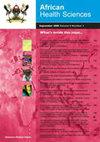CVP+VIVC预测脓毒性休克患者液体复苏的临床价值
IF 0.9
4区 医学
Q3 MEDICINE, GENERAL & INTERNAL
引用次数: 0
摘要
目的:探讨中心静脉压(CVP) +下腔静脉呼吸变异性(VIVC)在脓毒性休克自主呼吸患者液体复苏中的临床价值。方法:采用回顾性观察研究方法,选取2019年10月至2021年12月在我院接受治疗的感染性休克患者145例。根据30min后心输出量(△CO)变化率≥15%或△CO<15%,根据脓毒症早期液体复苏分为容量反应组和容量无反应组。比较CVP与VIVC联合预测脓毒性休克患者液体复苏的临床价值。 结果:研究组在液体复苏后12h、24h CVP较高,研究组在液体复苏后6h、12h、24h VIVC水平较高(p < 0.05)。Pearson相关分析显示,CVP、VIVC水平与脓毒性休克患者液体复苏显著相关(P<0.05)。CVP预测脓毒性休克患者液体复苏的受试者工作特征曲线(ROC)曲线下面积(AUC)为0.694,临界值为0.932,敏感性为46.9%,特异性为87.5%。VIVC预测脓毒性休克患者液体复苏的AUC为0.776,截断值为0.688,敏感性为50.0%,特异性为90.0%。CVP与VIVC联合预测脓毒性休克患者液体复苏的AUC为0.948,截断值为1.420,敏感性为90.6%,特异性为87.5%。 结论:CVP联合VIVC对脓毒性休克患者的容量反应性评价有较好的效果,优于单独CVP和VIVC。CVP和VIVC联合应用可预测脓毒性休克患者的液体反应性和体积反应性,对指导临床液体反应性治疗具有重要意义。 关键词:感染性休克;液体复苏;本量利;VIVC。本文章由计算机程序翻译,如有差异,请以英文原文为准。
Clinical value of CVP+VIVC in predicting fluid resuscitation in patients with septic shock
Objective: To explore the clinical value of central venous pressure (CVP) + inferior vena cava respiratory variability (VIVC) in fluid resuscitation in spontaneously breathing patients with septic shock.
Methods: In retrospective observational study, during October 2019 to December 2021, 145 patients with septic shock treated in our hospital were enrolled by the method of observational study. According to the change rate of cardiac output (△ CO) ≥15% or △ CO<15% after 30 minutes, they were assigned into volume-responsive and volume-unresponsive group depending early fluid resuscitation in sepsis. The clinical value of combination of CVP and VIVC in predicting fluid resuscitation in patients with septic shock was compared.
Results: The CVP of the study group was higher at 12h and 24h after fluid resuscitation, and the VIVC level of the study group at 6h, 12h and 24h after fluid resuscitation was higher (P<0.05). Pearson correlation analysis indicated that CVP, and VIVC levels were noticeably correlated with fluid resuscitation in patients with septic shock (P<0.05). The area under curve (AUC) of receiver operating characteristic curve (ROC) of CVP for predicting fluid resuscitation in septic shock patients was 0.694 and the cut-off value was 0.932, the sensitivity was 46.9%, and the specificity was 87.5%. VIVC predicted fluid resuscitation in septic shock patients with an AUC of 0.776, which was a cut-off value of 0.688, a sensitivity of 50.0%, and a specificity of 90.0%. Combination of CVP and VIVC predicted fluid resuscitation in septic shock patients with an AUC of 0.948, which was a cut-off value of 1.420, a sensitivity of 90.6%, and a specificity of 87.5%.
Conclusion: Combination of CVP and VIVC may have a good effect on the evaluation of volume responsiveness in patients with septic shock, which is better than single CVP and VIVC. Combination of CVP and VIVC can be adopted to predict fluid responsiveness volume responsiveness in septic shock patients, which is of great significance for guiding clinical fluid responsiveness therapy.
Keywords: Septic shock; fluid resuscitation; CVP; VIVC.
求助全文
通过发布文献求助,成功后即可免费获取论文全文。
去求助
来源期刊

African Health Sciences
MEDICINE, GENERAL & INTERNAL-
CiteScore
2.30
自引率
0.00%
发文量
179
审稿时长
>12 weeks
期刊介绍:
The African Health Sciences is an internationally refereed journal publishing original articles on research, clinical practice, public health, policy, planning, implementation and evaluation, in the health and related sciences relevant to Africa and the tropics. Its objectives are to: Advocate for and promote the growth of reading culture in sub Saharan Africa; Provide a high quality journal in which health and policy and other researchers and practitioners in the region can and world wide, can publish their work; Promote relevant health system research and publication in the region including alternative means of health care financing, the burden of and solution of health problems in marginalized urban and rural communities amongst the displaced and others affected by conflict; Promote research and the systematic collection and collation and publication of data on diseases and conditions of equity and influence; Promote development of evidence-based policies and guidelines for clinical, public health and other practitioners. African Health Sciences acknowledges support provided by the African Health Journals Partnership Project that is funded by the US National Institutes of Health (through the National Library of Medicine and the Fogarty International Center) and facilitated by the Council of Science Editors.
 求助内容:
求助内容: 应助结果提醒方式:
应助结果提醒方式:


